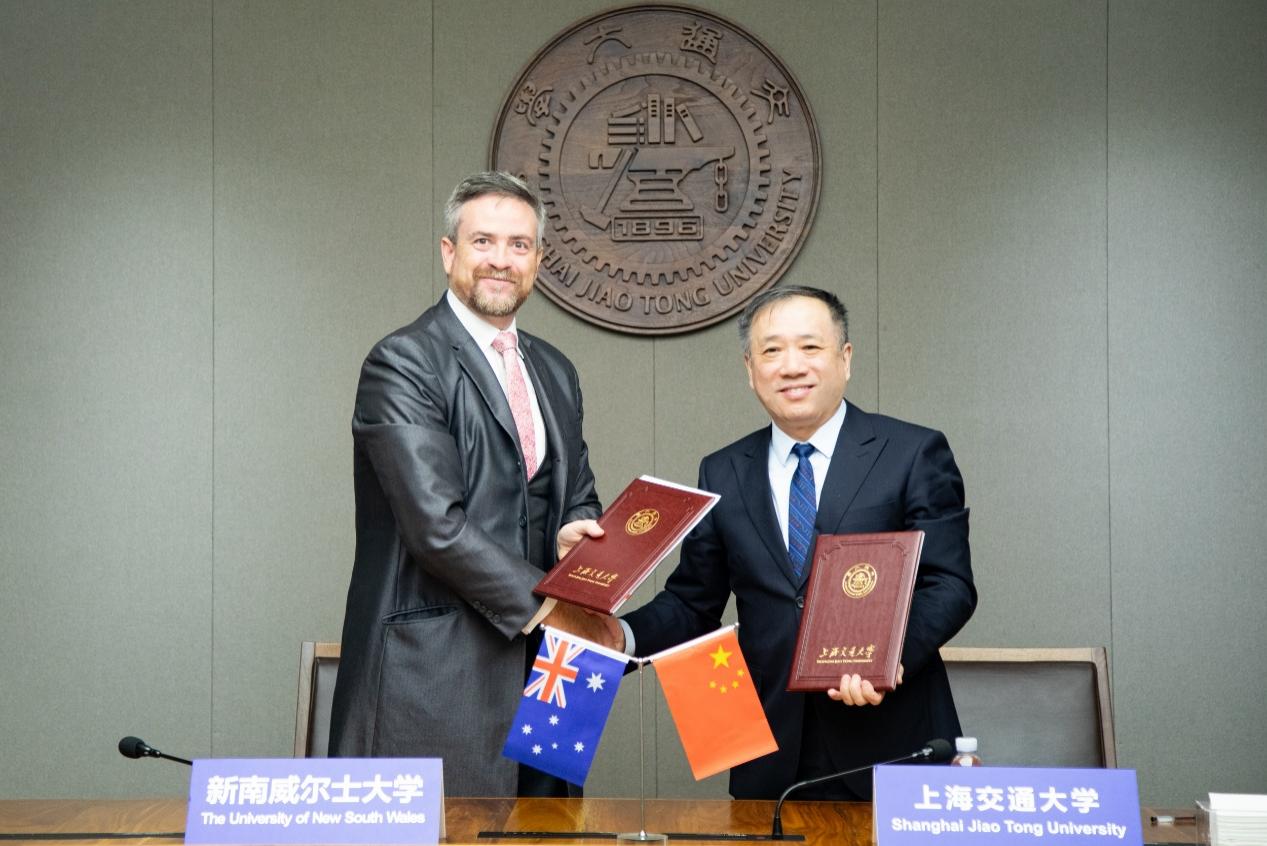From weather forecasting and drug discovery to financial risk management, many cutting-edge fields rely on solving complex scientific computing problems. Yet traditional computers often struggle with large-scale, high-dimensional, multi-scale and high-precision tasks, frequently encountering the bottleneck of “insufficient computing power and excessive processing time.” Computational efficiency has become a core challenge.
On November 22, the Quantum Scientific Computing Team at Shanghai Jiao Tong University (SJTU) officially released UnitaryLab, the world’s first quantum scientific computing platform designed to tackle these computational challenges. By developing quantum algorithms for partial and ordinary differential equations, numerical linear algebra, optimization, machine learning, and statistical computation, UnitaryLab aims to overcome the limitations of classical computing and provide efficient solutions for demanding scientific and engineering applications. UnitaryLab 1.0 focuses first on the core challenge of differential equation solving. It enables quantum-algorithm-based modeling, computation, and quantum-circuit design, offering breakthrough improvements in efficiency. Theoretically, it can increase computational speed by over sixfold for 3-dimensional equations, more than 25,000-fold for 5-dimensional equations, and over one trillion-fold for 9-dimensional equations.
[1] Based on 128 degrees of freedom per dimension for the 3D, 5D, and 9D cases.
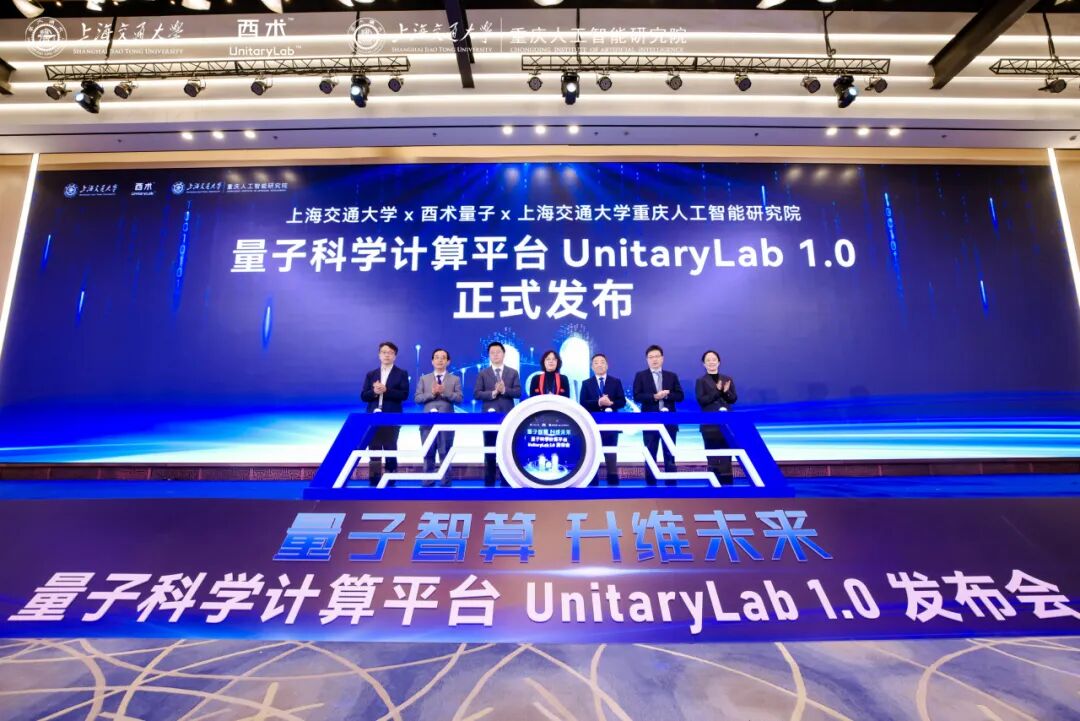
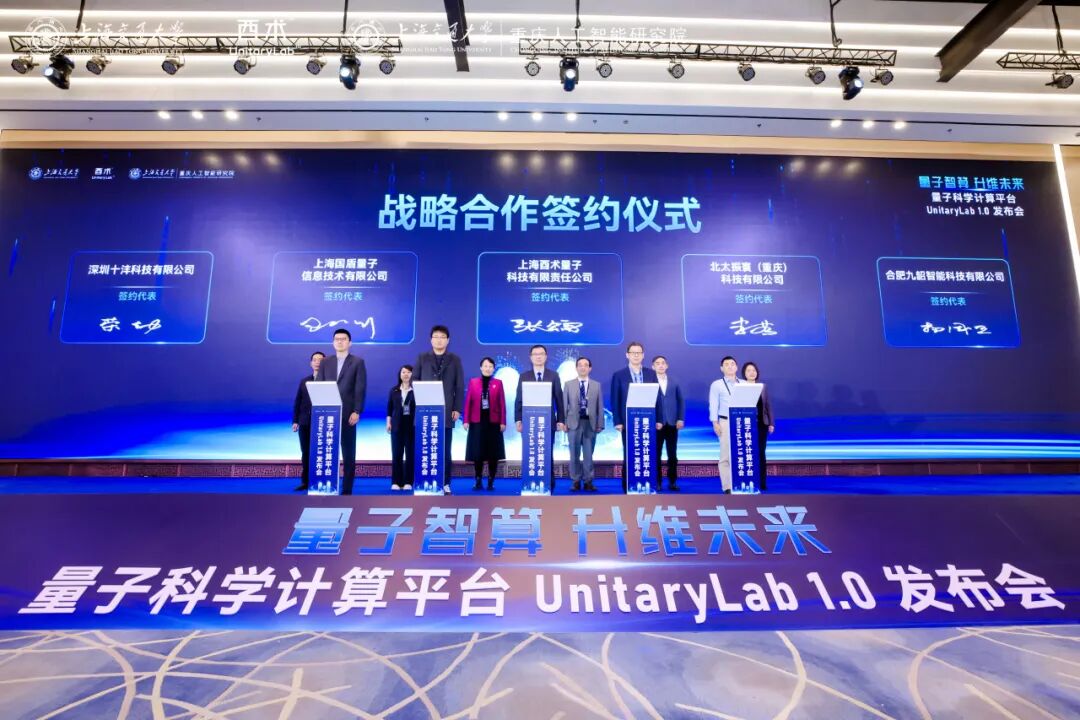
World’s First “Schrödingerization” Algorithm Breaks Through the Barrier Between Quantum and Classical Computing
At the core of UnitaryLab 1.0 is the “Schrödingerization” quantum algorithm series developed by the SJTU teams led by Professors Jin Shi and Nana Liu. This framework transforms partial differential equations into unitary evolution equations—forms that quantum systems can naturally process—thereby addressing long-standing difficulties in adapting quantum algorithms to real scientific and engineering problems.
The breakthrough has significantly broadened the range of problems quantum computing can tackle. It was recognized as the sole representative achievement in mathematics in the National Natural Science Foundation of China 2024 Annual Report. By enabling efficient interfacing between classical models and quantum computation, the framework lowers the barrier for applying quantum algorithms to real-world challenges in fields such as finance, energy, and healthcare.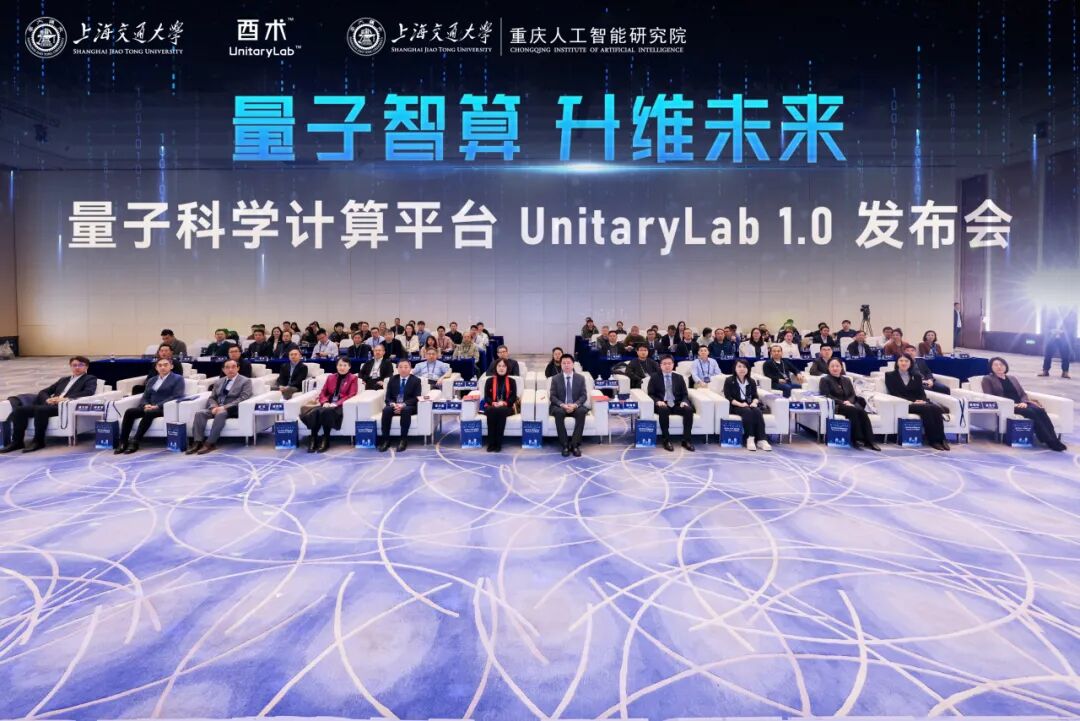
Making Quantum Computing Within Reach: Three Key Platform Advantages Remove Application Barriers
In the past, solving complex problems with quantum computing required not only deep expertise in quantum physics and advanced mathematics, but also strong proficiency in computer programming. Cross-disciplinary expert teams were often needed to complete the entire workflow—from modeling to computation. As a result, engineers, researchers, and university students, even when faced with real computational needs, were often deterred by the high barrier to entry, which severely limited the wider adoption and application of quantum computing. The core mission of UnitaryLab is to build a full-process, easy-to-use quantum scientific computing platform based on “Schrödingerization,” linear algebra, optimization, and various other quantum algorithms, enabling powerful quantum computing capabilities to move beyond the laboratory and truly serve scientific research and industrial innovation. The platform’s functional advantages are reflected in the following aspects:
1) Full-Process Ease of Use: From “Expert-Only” to “Beginner-Friendly”
UnitaryLab 1.0 directly addresses key pain points by innovatively integrating end-to-end tools for “model construction – algorithm adaptation – result visualization,” paired with an intuitive user interface that makes quantum computing truly user-friendly. The platform is equipped with Shanghai Jiao Tong University’s original “Schrödingerization” core algorithms and models, simplifying the complex process of quantum-form model construction into straightforward parameter inputs. Users do not need specialized quantum knowledge—by simply entering the essential data of a problem, the system automatically completes the transformation and computation, with no need to manually write complex code at any stage.
“This product significantly lowers the barrier to using quantum computing,” said Professor Zhang Lei, the chief director of the UnitaryLab platform. UnitaryLab 1.0 enables users outside the quantum field—such as engineers, researchers, and students—to quickly carry out quantum scientific computing and engineering simulations. It greatly shortens the modeling cycle, dramatically accelerates the efficiency of solving complex problems, and promotes a comprehensive upgrade in talent development for the quantum industry.
2) Multi-Scenario Coverage: One Platform Supporting the Entire Chain of “Education–Research–Industry”
UnitaryLab 1.0 provides an innovative dual adaptation for both “research and industry,” achieving a “single platform that meets multiple needs.” On the teaching and research side, it includes a visual quantum circuit module that supports real-time editing, allowing students to intuitively observe how quantum algorithms operate. On the industry application side, it features a built-in library of commonly used equations across various fields, such as the Black–Scholes equation for financial modeling and elastic wave equations for geological exploration, meeting users’ diverse computational requirements. “The platform effectively addresses the long-standing gap between scientific research and industrial application,” said Dr. Hu Junpeng, the software development lead. By covering core equations required for high-performance computation across different domains, the platform truly achieves “develop once, deploy across multiple scenarios.” This not only enriches quantum teaching resources in universities, but also builds a complete pathway connecting “talent training, scientific innovation, and industrial application.”
3) Customization + Hardware Compatibility: Solving the Challenges of “Misaligned Needs and Hardware Incompatibility”
UnitaryLab 1.0, built upon its original core algorithms and open interfaces, supports flexible expansion of functional modules. From basic simulations to complex problem solving, computations can be customized according to specific research projects or industrial scenarios. In terms of hardware compatibility, the platform is fully compatible with mainstream quantum computing hardware architectures. It can interface with real quantum machines for technical verification, while also enabling high-precision quantum circuit simulations on everyday office computers—requiring no hardware replacement or additional investment from users.
Dr. Hu Junpeng noted that this not only significantly reduces users’ application costs and hardware adaptation barriers, but also promotes the coordinated development of the quantum computing ecosystem—spanning algorithms, software, and hardware—thereby accelerating the industry’s move toward large-scale commercialization.
Accelerating the Deployment of Quantum Computing from the Laboratory to Industry
The core value of quantum computing lies in its ability to tackle complex problems that classical computing “cannot compute, computes too slowly, or cannot compute at all.” The real-world deployment of UnitaryLab 1.0 will help quantum computing gradually move beyond the laboratory, providing new and more efficient solutions for science and engineering fields with high computational demands.
Since its launch, the platform has received active testing from research teams in China and abroad for quantum computing simulation studies. It has also attracted a large number of collaborators. The platform has already partnered with leading domestic quantum hardware companies to apply UnitaryLab 1.0 in real-machine verification. In addition, it has established initial collaboration and communication with industrial design simulation software teams and general-purpose scientific computing and system simulation software teams from various enterprise sectors, actively exploring quantum-enabled applications across different fields.
The team will also conduct research on establishing standards for quantum algorithms for partial differential equations, aiming to build a full-chain standard system for PDE quantum solving that covers “algorithm workflow – circuit implementation – software–hardware interfaces.” This effort will help shift quantum algorithm development from “fragmented exploration” toward “standardized deployment.”
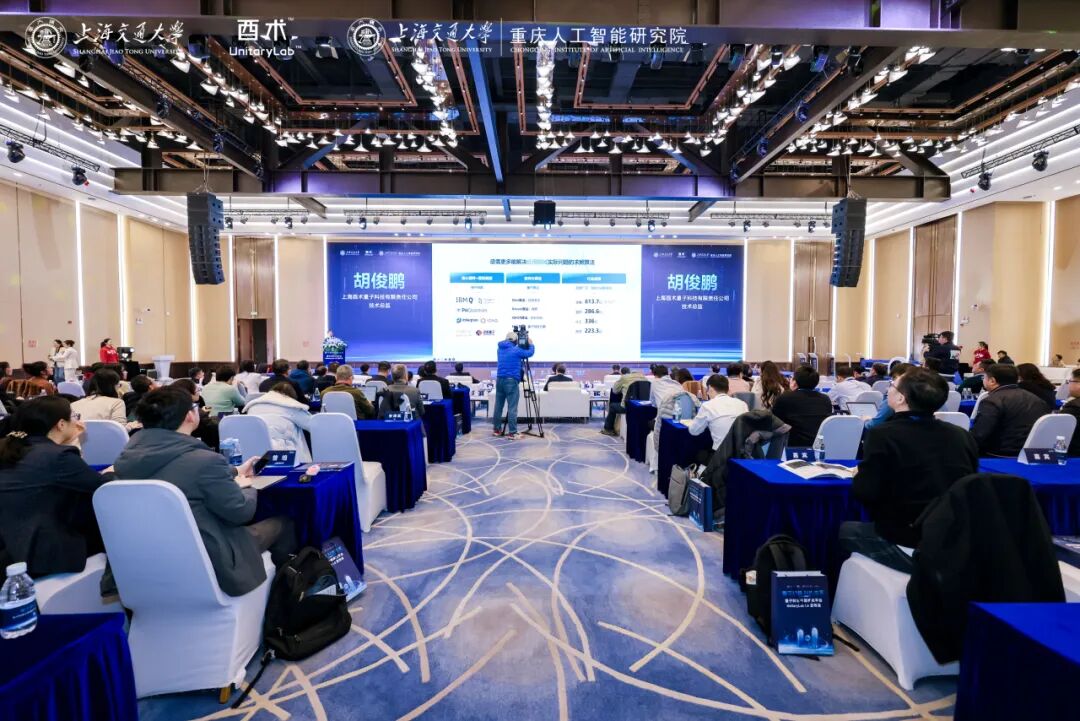
Leveraging Software Innovation to Drive a New Quantum Industry Ecosystem
The official release of UnitaryLab 1.0 and the successful launch of the “Quantum Intelligence · Elevating the Future” event demonstrate the SJTU team’s originality in quantum algorithm research and will further accelerate the broader application of quantum scientific computing. Looking ahead, the team will continue to advance innovation in quantum algorithms and develop specialized hardware compatible with its unique algorithmic frameworks, while iteratively upgrading the functional modules and application ecosystem of the UnitaryLab platform. These efforts aim to drive the large-scale deployment of integrated software–hardware solutions, making quantum computing a core engine for industrial upgrading and overcoming computational bottlenecks. With more timely weather forecasting, shorter waiting times for radiotherapy planning, faster geological exploration, improved energy management solutions, and much more, quantum computing will help propel us toward a better future.
Cheers to SJTU’s Innovation!
Source: Institute of Natural Sciences,
Shanghai Jiao Tong University Chongqing Institute of Artificial Intelligence
Editor: Chen Yuyang
Chief Editor: Jin Xue
Translated by: Zara
Proof: Steven


